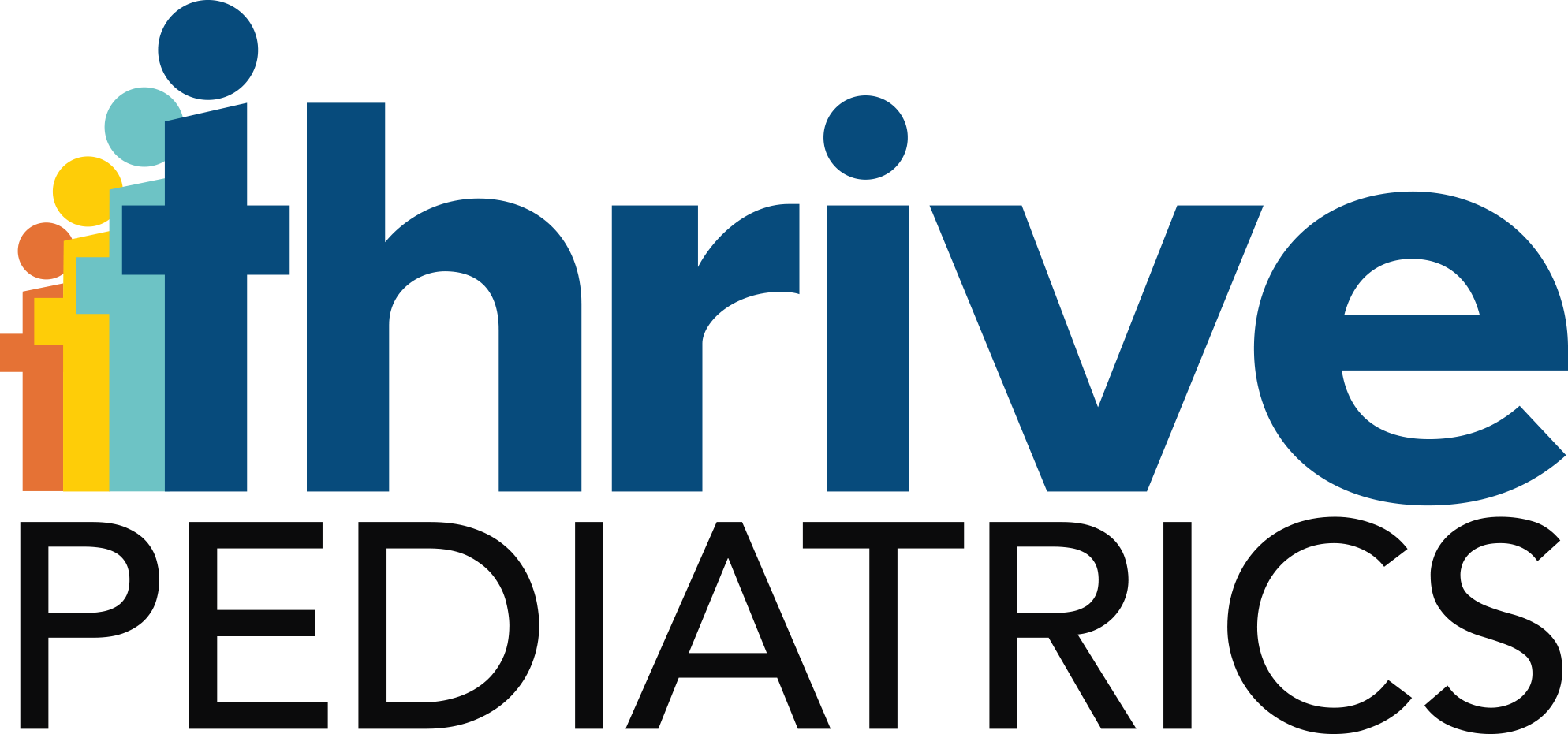Part One: Understanding Asthma
What is Asthma?
At Thrive Pediatrics, we care for several patients that live with a condition called asthma. Asthma is a lung disorder that keeps one from breathing adequate oxygen.
What are the symptoms?
The symptoms include coughing, shortness of breath and wheezing. Wheezing is a sound usually only heard with a stethoscope but occasionally can be heard from a child’s mouth while breathing during an asthma attack.
What is happening when there is an asthma problem?
Now let us take a closer look into what is happening in the lungs with asthma. The lung pipes that deliver the oxygen that we breath branch into smaller pipes called bronchioles. These tube-like structures help deliver the air we breathe to the alveoli where oxygen exchange occurs. In normal function, lungs allow for easy movement of air. In lungs with asthma, this air movement is restricted due to the closing of the bronchioles and also mucus and swelling inside.
You see we are exposed to microscopic molecules all day long and all night long and in lungs with asthma these molecules cause a dramatic response which causes the airways to become smaller in diameter. This is what leads to the coughing, shortness of breath and wheezing.
What triggers asthma symptoms or attacks?
Common triggers for these symptoms include:
- Cold viruses
- Smoke
- Allergies
- Other strong odors
- Sometimes exercise
Part Two: Treating Asthma
How do we treat Asthma?
There are two major aspects of treating asthma:
- Identifying and avoiding your triggers
- Understanding and managing your medications
- Identifying and avoiding your triggers
- Understanding and managing your medications
These issues should be a part of an asthma action plan created by you, your child and their medical provider.
Avoid your triggers
- First, you do your best to avoid your triggers. If colds and illnesses cause your asthma to flair, keep your hands clean and avoid touching your face during the day. It is also very important to get your flu shot.
- If your trigger is smoke, then do not get too close to the campfire and avoid exercise during those smoky, Idaho months.
Manage your medications
We recognize that one cannot always avoid their triggers, so it is important to be taking your asthma medications:
- Albuterol is also known as a rescue inhaler. It opens up the lungs by preventing those bronchiole muscles from contracting. In its typical form, it will only last about 4 hours, so it must be repeated throughout the day during an asthma flair. It is not intended to be taken 365 days of the year. It is a RESCUE inhaler and only intended for a few days to a week during an asthma flair. Its side effects include possible elevated heart rate and/or jitteriness. Other names for it include Xopenex, Ventolin, or ProAir.
- Inhaled steroids are your controller medications. Not everyone needs to be on a controller medicine. These medicines attack the swelling and mucus found inside the bronchioles. They work by reducing mucus production and therefore also open the airways. They are intended to be taken daily, usually both day and night. The main potential side effect is a minor infection in the mouth called Thrush, so everyone should rinse their mouth after taking these medicines. And for the little kids, they should just take a drink of water. Their common names include Flovent, Qvar and Pulmicort.
- Third, you should always use your spacer. These are devices designed to help deliver the medicine to the appropriate place in the lungs. Otherwise, if you do not use your spacer, a large amount of medicine with stick to the roof of your mouth.
- Finally, you will need to know when and how often to take all of these medicines and that is established in an asthma action plan as mentioned above.
Thank you so much for watching our video and reading our article. We hope this helps you understand the issue of asthma better and feel more comfortable in knowing how it is treated.
We are Thrive Pediatrics, caring for Idaho’s future, today.


